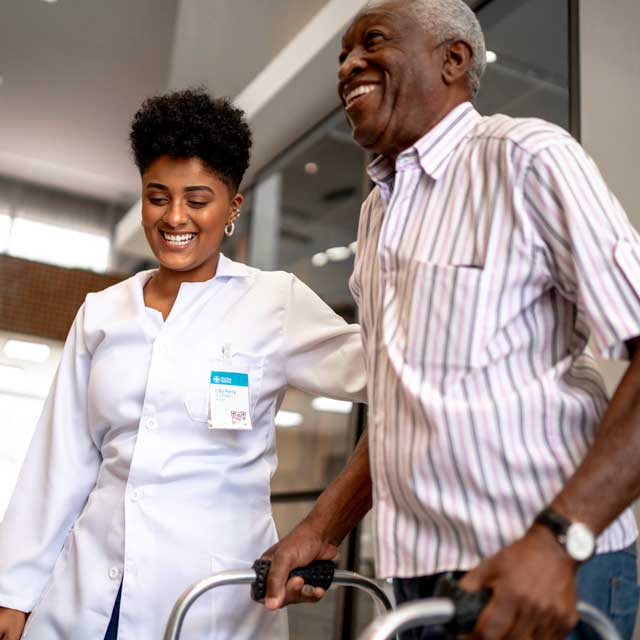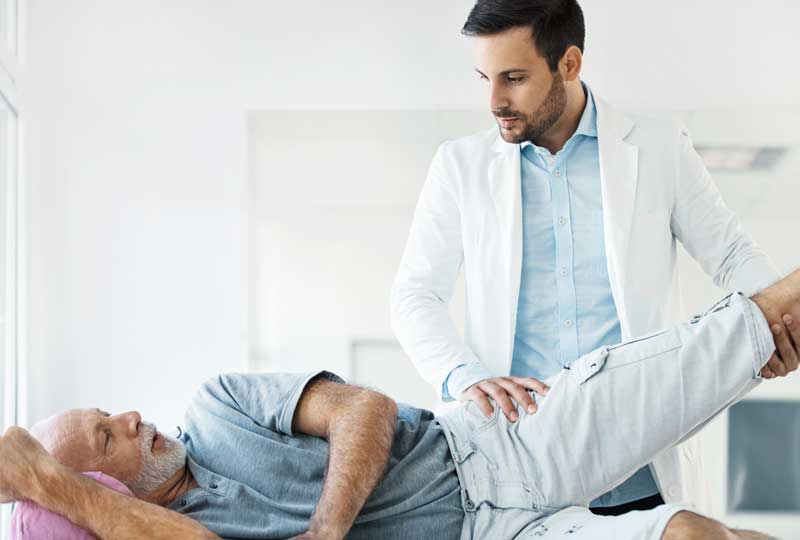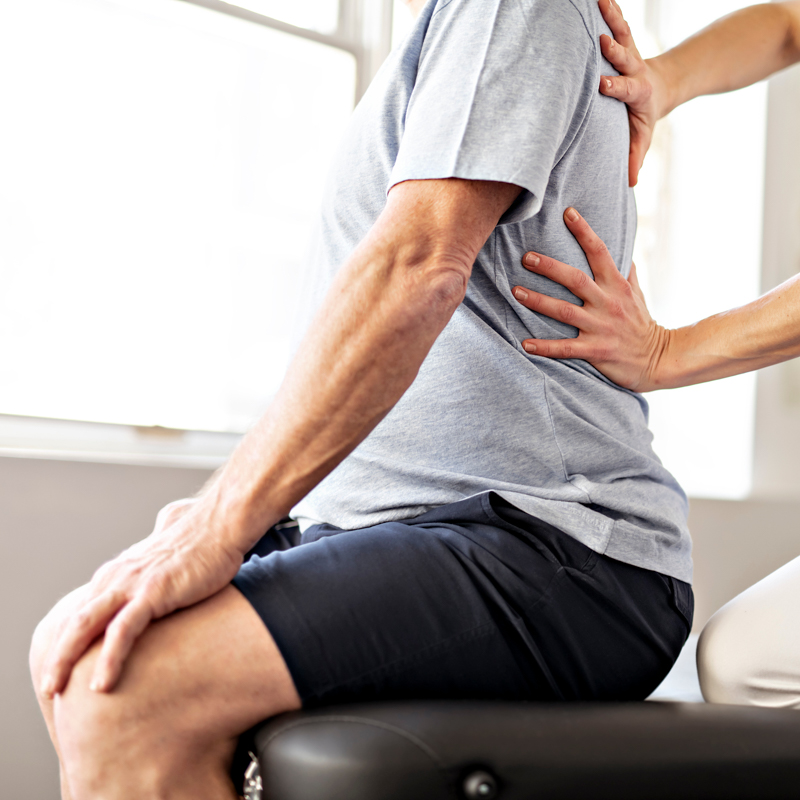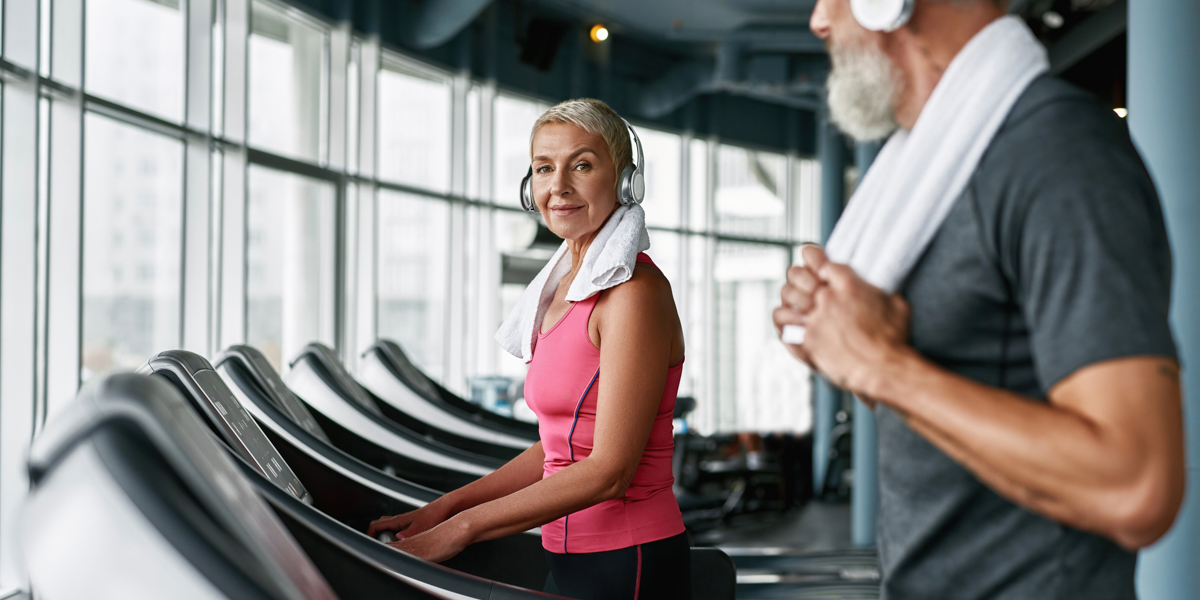Use these physical therapy tips to strengthen your hips against osteoarthritis.
Our hips are crucial joints for stability and mobility. But for an estimated 27 million Americans, osteoarthritis of the hip joint causes pain and impedes mobility. Hip osteoarthritis often decreases the space between the ball and socket. Sometimes the smooth cartilage that offers a buffer between these two bones degrades, and the joint then develops inflammation from the increased friction.
Hip pain from osteoarthritis can keep you from doing all the activities you enjoy, and it can lead to pain elsewhere in the body. But physical therapy and hip strengthening for osteoarthritis can help.
“There is a lot of research on improving pain through hip-strengthening exercises after osteoarthritis has developed,” said Jacob Storey, a physical therapist at Vanderbilt Orthopaedics. Strengthening the muscles can help improve functional movement and work to decrease overall pain levels. “We’ve got a pretty good idea that exercise can enhance the longevity of our joints,” Storey said.
The importance of glute muscles
Osteoarthritis presents differently for each patient, so physical therapy involves individualized treatment. “For the most part with osteoarthritis, we do see a higher rate of weakened gluteal muscles,” Storey said. “There’s a bunch of exercises that we can use to strengthen and fire those glutes and get those working to support our hip joint.”
Increasing mobility
Physical therapy for hip osteoarthritis takes a three-pronged approach to not only strengthen the hips but also to improve mobility and coordination. Increasing mobility in physical therapy helps to build strength throughout the joint’s entire range of motion, while coordination works on the mind-body connection to ensure control.
“Just moving the hip joint in a new way can often really increase function and decrease pain,” Storey said.
Simple stretches, slow hip rotations and beginner yoga poses are great ways to keep hips active on a daily basis.
Get moving
Movement, in general, is important for the hip joints and surrounding muscles. Storey recommends getting at least 15 to 20 minutes of cardiovascular exercise at least three times a week, aiming for an activity you enjoy. Walking, water aerobics, yoga and biking are all great, low-impact options for getting regular movement.
“The human body is designed to move rather than sit in one position throughout the day,” he said. “And the toughest part is finding ways to move the hips, move your joints and stretch your muscles. It really helps to lower pain and has a positive impact on function.”
Hip strength for healthy aging
Strong hips are also important for overall strength and balance. “The hips, back and abdominals all work together,” Storey explained. Plus, healthy hips are key for knee and ankle stability.
“The hips are very important and sometimes the most neglected muscle group in the body,” Storey said. “As we age, we really start to see that neglect present itself as a decrease in balance or difficulty with routine activities.”
That’s why hip exercises are crucial for anyone with osteoarthritis of the joint — but also for all of us. “It’s tremendously important to keep your hips strong, flexible and active,” he added.
The physical therapy process
Physical therapy typically involves in-person sessions as well as maintaining a prescribed routine at home. Storey said he gives his patients plenty of exercises to do on their own to continue to build progress between appointments.
A formal course of physical therapy may last several weeks with patients then continuing a take-home treatment plan. “The ultimate goal is that most patients are walking out of the clinic with improved function,” Storey said, “but also they know how to manage and maintain their new functional ability by themselves.”

Need help?
If you’ve had an orthopaedic injury or surgery, Vanderbilt Physical and Occupational Therapy can help you heal and regain function.




